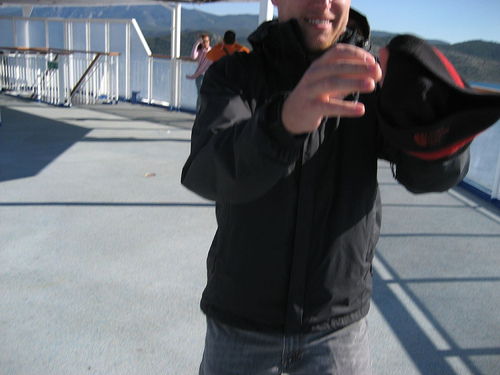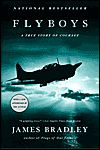
Retro- blogging is a term that I invented (as far as I know) when I started reading Brian's blog posts about our weekend adventures that he was finally writing, a good deal after they happened. I am now commencing the same, and I'm using my Flickr photo sets, which can be found here, as a guide.
I first arrived in Joburg in the afternoon of August 20th - a Monday, and spent the following week working with Leslie at our offices in Brooklyn (yes, irony, I am working in a neighborhood called Brooklyn). Leslie was off to Kruger that weekend, and I stayed in town to settle down and get my bearings a bit. Friday night I packed a bag and headed down to Brian and Jen's place. Brian and I went out for dinner and then hit The Blues Room afterwards, where we experienced some incredible music thanks to the fact that it was SA's annual jazz / blues festifal.
The next morning we woke up and headed for Soweto - the SOuth WEst TOwnships of Joburg, hence the name. Apparently the clever naming conventions for certain parts of cities isn't germain solely to Europe and the northeastern US. Soweto is where the Apartheid museum is. You might think you don't know any Afrikaans, but the entire world knows one Afrikaans word: apartheid.

The first thing that struck me when we drove up was how very empty the parking lot was. That was my first realization that Johannesburg, for all intents and purposes, is not really that much of a tourist town. The foreigners I've met here by in large part, so far, have been like me - here for work. The city simply does not have a tourism draw like Cape Town. 10AM on a Saturday morning and not more than a couple dozen cars in the parking lot. Sad, in a way, but at least we would have the museum to ourselves.
 The tickets (you either got a white or a black one) determined which door you got to go in, and what you got to see upon entering. We were able to come back to the start of each, but it was an interesting design for the entrance. And the interesting design wouldn't end there - practicaly the entire museum was extremely well thought out - architecturally, aesthetically, artistically. When I got home I researched it a little and found that the design was undertaken by a consortium of architects, and the exhibits were similarly fashioned - by teams of curators, filmmakers, historians and designers. The whole museum, although it operates in a not-for-profit manner, was originally built by a private consortium as part of their bid to build the casino / theme park that sits across the parking lot from the museum.
The tickets (you either got a white or a black one) determined which door you got to go in, and what you got to see upon entering. We were able to come back to the start of each, but it was an interesting design for the entrance. And the interesting design wouldn't end there - practicaly the entire museum was extremely well thought out - architecturally, aesthetically, artistically. When I got home I researched it a little and found that the design was undertaken by a consortium of architects, and the exhibits were similarly fashioned - by teams of curators, filmmakers, historians and designers. The whole museum, although it operates in a not-for-profit manner, was originally built by a private consortium as part of their bid to build the casino / theme park that sits across the parking lot from the museum.
I think the pictures say a lot, although I feel like I only got a fraction of the museum captured in them. It was a detailed, mostly dismal walk through the history of this nation, from its societal origins, to its dramatic shifts, to the mining societies and the following years of oppression. It began with the smack in the face of what life in the worst times - not too long ago - was really like: separate entrances, the endless signs, the quotes that simply shocked you at what passed for "normal" at the time. The word "classification" took on a whole new meaning.

 Once through the entrance, the museum essentially did a flash-back to the roots of the people of South Africa, black, white, and "coloured" as they term it here - you're either one of the first two, or you are something else (a mix, or another race entirely). It didn't take long to move through the history of the country into the more modern times, when things truly started to spiral (not to gloss over the fact that the more ancient history wasn't a bowl of cherries either, of course).
Once through the entrance, the museum essentially did a flash-back to the roots of the people of South Africa, black, white, and "coloured" as they term it here - you're either one of the first two, or you are something else (a mix, or another race entirely). It didn't take long to move through the history of the country into the more modern times, when things truly started to spiral (not to gloss over the fact that the more ancient history wasn't a bowl of cherries either, of course). Some of the worst parts of the earlier clashes of the 20th century were well documented, at least photo- graphically speaking. There was an incredible array of thoughtful, poignant photography of the strife and the people behind it. I recall being simultaneously shocked by the depravity that men (mainly of my own skin tone) would sink to, and deeply impressed by those rare white individuals who were willing to stand with the resistance and refuse to quietly accept the status quo of the time. I don't diminish the struggles that the black man has had in South Africa, but I can't, at the same time, imagine how alone those very few white men - who were fighting against "their own," after a fashion - must have felt.
Some of the worst parts of the earlier clashes of the 20th century were well documented, at least photo- graphically speaking. There was an incredible array of thoughtful, poignant photography of the strife and the people behind it. I recall being simultaneously shocked by the depravity that men (mainly of my own skin tone) would sink to, and deeply impressed by those rare white individuals who were willing to stand with the resistance and refuse to quietly accept the status quo of the time. I don't diminish the struggles that the black man has had in South Africa, but I can't, at the same time, imagine how alone those very few white men - who were fighting against "their own," after a fashion - must have felt. 

One of the really gripping things about the experience was the transition from black and white stills to black and white video, to color video. Watching and listening to this piece of history in the same media that I would go home and watch the news on that very same evening was a definite gut check - the turmoil and turn-around that has happened here occurred, in large part, during my lifetime. The wounds are still fresh.

It was an emotional experience. It makes you question yourself and fear what your own sinful nature is capable of.
















1 comment:
oh my gosh- I love that picture of that boy...
Post a Comment